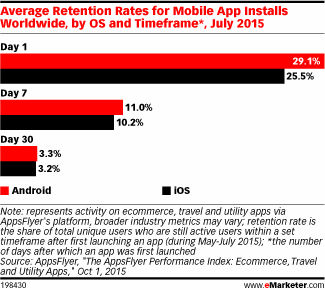Programmatic video advertising has become increasingly accepted across both mobile and desktop formats, and based on numbers provided by eMarketer, it’s not likely to slow down anytime soon.
The site’s latest report indicates that the format will continue to see growth, even if automation is playing a part in U.S. digital video ad spending. Both buyers and sellers see the advantages behind it, in an effort to reach out to general audiences.
The report, titled “Programmatic Video Advertising: Poised For Rapid Growth Despite ‘Premium’ Holdouts,” indicates that, based on a previous poll conducted by Digiday, over two-third of advertisers have already purchased some form of programmatic video.

The above chart ties in with those numbers, with Display channels getting the most attention by 85.6%. Following closely behind is Mobile (69.1%), Video (67.1%) and Social (49%). TV and Out-of-home also made the chart, albeit with considerably lower numbers.
Enthusiasm for the format remains at a critical level, but investment has a smaller interest compared to the general digital display market. The report indicates that 59% of the $26 billion being spent on U.S. digital display ads will be done through programmatic means for this year alone, while 39% of digital video ad dollars will go towards its spending.
This trend will grow. eMarketer estimates that by 2017, programmatic activity will reach about 65%, or $7.43 billion of the overall advertising market. The chart below shows a bigger breakdown of just where the growth will lie.

“When it comes to video, programmatic from an inventory perspective is very different,” said Rany Ng, product management director for display advertising at Google. “Just the sheer fact that there’s scarcity in the market creates different dynamics, so we’ve seen many of our broadcasters and programmers becoming much more comfortable with participating in private marketplaces and striking private deals than they are with the open option.”
Buyers still have issues with programmatic means, mainly due to the lack of premium inventory and ad quality issues, according to the report. They wish to see expansion of video ads across various formats, but wonder about issues like audience identification, measurement and targeting; all of which could get in the way.
Still, eMarketer believes that most of these will be alleviated over the next couple of years, with a triple-digit jump in programmatic video ad spending for this year alone, and an even bigger increase by 84.5% over 2016.
It’s still too early to tell where programmatic advertising will end up, but there’s definitely interest in it. More details on the report can be found here.

